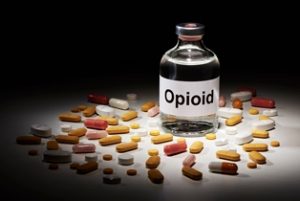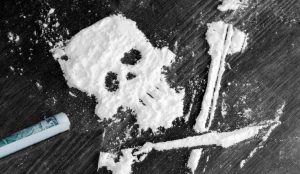CJC-F, CJC-F Announcements
Introduction
With reports of drug and drug offences weaving themselves into local news from time to time, you may have wondered how exactly forensic scientists managed to identify and quantify the drugs – what more to prove that an accused individual had consumed the drug.

Photo taken from https://noys.org/programs/substance-abuse-prevention/illicit-drug-use
Before knowing about the tests involved in illicit drug screening as well as how the different drugs are identified, it is good to know why such drugs are illegal in the first place. Illicit drugs may harm the body in many ways; consumers may behave in manners that pose danger to themselves and the public. Illicit drugs may also be used to spike other people’s drinks in order to impair their normal mental and physical behaviours and they may be used in sports to give athletes an unfair advantage over their peers.
Illicit drugs are often put into seven classes: Stimulants, Depressants, Cannabis, Narcotics, Hallucinogens, Dissociative anaesthetics, and Inhalants.
Stimulants, which include amphetamines and cocaine, speed up bodily functions and increase anxiety, heart rate, and blood pressure; long-term effects include permanent heart and brain damage.
Depressants, which include benzodiazepines, relax the central nervous system, which can lead to unconsciousness, and other bodily functions including slowing down breathing, which can lead to death; long-term effects include mental health disorders and decreased memory.
Cannabis has similar effects to depressants. Narcotics, or opioids, have similar effects to depressants as well as the additional effect of painkilling. Long-term effects include permanent brain damage due to lack of oxygen to the brain.
Hallucinogens, which include LSD and Psilocybin, alter the users’ perceptions which can lead to aggression and paranoia. Dissociative anesthetics – which include ketamine, PCP, and nitrous oxide – are characterized by distorted sensory perceptions, hallucinations, and feelings of disconnection or detachment from the environment and self. Long-term effects include urine incontinence and bladder ulceration for Ketamine, and nerve damage and anemia for Nitrous Oxide.
Inhalants include substances such as glue, spray paints, and nitrites used for the purpose of producing psychoactive effects. Overdose effects include heart seizures while long-term effects include permanent damage to the brain, liver, kidneys, and bone marrow.
As such, due to the public health threats and the risks of violent crimes from taking these drugs, these drugs are governed by the Misuse of Drugs Act mentioned in our first article. As such, this article will go into how drugs can be qualified and quantified after consumption.
Metabolism of drugs
When drugs of abuse are consumed by individuals, the drugs might metabolise inside the human body. This results in the formation of daughter ions which can be hard to detect when analysing consumed drugs. It is thus crucial to identify what the metabolites are if the drugs undergo metabolism in order to be able to detect them. Due to the vast number of illicit drugs, only the metabolisms of the more common illicit drugs will be covered in this article.

Image from https://www.oecd.org/health/opioids.htm
Opioids cover a large range of naturally occurring, semi-synthetic, and completely synthetic drugs that have morphine-like actions including analgesia (pain relief), sedation, respiratory depression, and constipation. Opioids include drugs such as heroin, morphine, methadone, and codeine, as well as lesser-known opioids such as fentanyl, oxycodone, and tramadol.
Although some opioids may be used in everyday situations. For example, codeine is used often used as a cough suppressant and may be bought from pharmacies (though steps are taken by healthcare providers to prevent abuse even for codeine) while morphine, fentanyl, oxycodone, tramadol, and methadone may be used to control severe pain in hospital settings under strict conditions by specific authorised persons- they are illicit outside of these uses.
The presence of morphine helps indicate the abuse of morphine, heroin, and codeine (as it is the primary metabolite of heroin and codeine). It might also be further and primarily metabolised to 3-morphine-glucuronide and 6-morphine-glucuronide. Meanwhile, the presence of norcodeine helps confirm the use (though not necessarily the abuse) of codeine.
The presence of 6-MAM, hydrolysed from heroin only, is used as a confirmatory test for the misuse of heroin as it is not present in the misuse of other opioids. However, 6-MAM has an extremely short half-life and can only be detected up to eight hours in urine.
Methadone can be detected by the presence of its metabolite, EDDP, in urine. This differentiates methadone from the other opioids and, in cases whereby patients are suspected of selling their methadone prescriptions instead of taking them, indicate that methadone has been consumed by the patient and not simply added to the urine. More on urine adulteration in the final segment.

Image taken from https://adf.org.au/drug-facts/amphetamines/
Amphetamine and its analogues, such as methamphetamine and MDMA, can be detected by the presence of amphetamine and/or methamphetamine. However, some immunoassays are unable to distinguish between d-methamphetamine (the isomer with euphoric and abusive properties) and l-methamphetamine (AKA levmetamfetamine, the isomer without stimulant effects). This poses a problem as l-methamphetamine is a metabolite of selegiline, a medication for Parkinson’s Disease and depression, and also because some nasal decongestants containing levmetamfetamine exist overseas (although the latter is an extremely unlikely scenario as levmetamfetamine is not available in Singapore); as such, caution should be taken when interpreting assays that cannot distinguish the two isomers.
Although benzodiazepines may be prescribed by doctors for sleep issues, they carry a risk of being abused and may also be used to spike drinks. Most benzodiazepines are primarily metabolised to oxazepam and nordiazepam, and the presence of these help indicate the misuse of benzodiazepines. Unlike immunoassays, other methods can help identify the specific benzodiazepine(s) while being more accurate and sensitive.

Photo of cannabis from the CNB website:https://www.cnb.gov.sg/drug-information/drugs-and-inhalants
Cannabis, which contains an active ingredient known as delta-9-THC, is metabolised to the metabolite delta-9-carboxy-THC. This compound can be detected in both urine and oral fluid and has a longer window of detection compared to most of the other illicit drugs due to its lipophilicity (preference to remain in body fat compared to water, which leads to a slower rate of excretion and thus remaining longer in the body). However, caution should be taken when interpreting the results as passive smokers (those who do not smoke cannabis but had breathed in cannabis fumes) might turn up positive in certain conditions- such as being tested for oral fluids within 30 minutes of passive ingestion.

Image from https://owlsnestrecovery.com/signs-of-cocaine-overdose/
Cocaine is metabolised by butyrylcholinesterase and liver esterase into up to eight inactive metabolites, with the main metabolite being benzoylecgonine. In the use of concurrent use with alcohol, there may be present a distinct metabolite known as cocaethylene.
LSD, being rapidly and extensively metabolised in the body, can be detected by the presence of its major metabolite 2-oxo-3-hydroxy-LSD. Meanwhile, psilocybin is first dephosphorylated to psilocin (the active metabolite) before being further metabolised to psilocin-O-glucuronide; this last metabolite is usually the compound that is tested for.
Last but not least, New Psychoactive Substances (NPS) cover a large range of drugs from the seven main classes. NPS is defined as substances not controlled by the 1961 Convention on Narcotic Drugs or the 1971 Convention of Psychotropic Substances but pose similar health threats to the listed illicit drugs. They are also known as “designer drugs” as additional components are added to their molecular structures in order to bypass drug laws. While they are also usually tested for using GC-MS and with similar mediums, substantially more time is usually taken to identify the exact compounds.
How drugs in urine, hair, and blood are tested for and used as evidence
The three most popular biological mediums used for testing drug ingestion are blood, urine, and hair. In general, drugs can be detected in blood first for a duration depending on their half-lives (time taken for half the ingested amount of drug to be eliminated from the body which is dependent on the individual’s body characteristics) and the sensitivities of the detection instruments used. This is then followed by urine which usually remains for up to three days, and lastly by hair which can be detected for up to ninety days.

Centrifuge machine. Image from https://bitesizebio.com/47991/centrifuges-centrifugation/
Advantages and Disadvantages of each medium
So, which of these three mediums- blood, urine, and hair- is the best? In truth, each of these methods has its own pros and cons.

Image from https://www.aacc.org/cln/cln-stat/2016/april/21/cdcs-new-opioid-guidelines
Although urine is popular due to its convenience, low cost, and non-invasiveness, many tactics can be used by abusers to get around it in the process of indirect collection of urine – such as dilution, adulteration to render it untestable, and substitution with drug-free urine. Thankfully, there are methods to counter such tactics; these methods include measuring the temperature of the urine immediately after testing (which should be around the body’s temperature), checking the specific gravity of the urine (the ratio of the density of the sample urine over the density of water, which would usually 1.002-1.030), and pH (usually 4.5-8.0). However, when determining adulteration by pH, it should be noted that several medical conditions and medications might alter the pH of urine, such as metabolic alkalosis, renal tubular acidosis, and the use of antacids (a class of over-the-counter medications commonly used for mild stomach discomfort). The low creatinine concentration in urine may not be completely useful in indicating adulteration of urine – in part due to limitations such as large physiological variabilities through diet, muscle mass, etc. However, the presence of it in a concentration of >5mg/dL does help determine that the urine is indeed human urine. Although direct collection of urine would prevent tampering of urine, it can be degrading and embarrassing. However, this method may still be employed.

Image from https://www.turnbullhill.com.au/articles/driving-under-the-influence-of-illicit-drugs-dui/
Blood poses the advantage of being the most difficult to adulterate among the three. However, some disadvantages of using blood samples are its invasiveness, the fact that it needs to be kept refrigerated, and that it has the shortest window for detection among these three mediums. In addition, some drugs can be very unstable in blood, such as cocaine and its metabolites, and benzodiazepines.

Image from https://www.statnews.com/2016/11/01/hair-testing-drug-use/
Hair has a distinct benefit of being able to detect substance abuse up to 90 days after exposure and can be used to establish long-term usage (while the other two can only establish recent usage), as well as relatively good stability. However, some problems posed include: the current lack of definitive thresholds for false-positives and false-negatives, lack of ability to detect low amounts of cannabinoids, potential for external contaminants interfering (e.g., hair washing), and high cost.

Image taken from https://www.nrpa.org/parks-recreation-magazine/2018/june/the-opioid-crisis/
Besides the three testing mediums tested above, there are other mediums for drug testing as well. The short article on other mediums for testing illicit drugs will cover some of these other mediums – so do look out for it.
*The views and opinions expressed in this article do not constitute legal advice and solely belong to the author and do not reflect the opinions and beliefs of the NUS Criminal Justice Club or its affiliates.
References
- National Institute on Drug Abuse (2020). Commonly used drugs chart. https://www.drugabuse.gov/drug-topics/commonly-used-drugs-charts
- American Addiction Centres (2020). The permanent effects of drugs on the body. https://americanaddictioncenters.org/health-complications-addiction/permanent-effects
- Heart ORG (2015). Illegal Drugs and Heart Disease. https://www.heart.org/en/health-topics/consumer-healthcare/what-is-cardiovascular-disease/illegal-drugs-and-heart-disease
- Turnbridge. The Long Term Effects of Drug Use. https://www.turnbridge.com/news-events/latest-articles/long-term-effects-of-drugs#
- Alcohol and Drug Foundation (2020). Dissociatives. https://adf.org.au/drug-facts/dissociatives/
- Central Narcotics Bureau. Drugs and Inhalants. https://www.cnb.gov.sg/drug-information/drugs-and-inhalants
- National Institute on Drug Abuse. Inhalants Drug Facts. https://www.drugabuse.gov/publications/drugfacts/inhalants
- Normand J, Lempert RO, O’Brien CP (1994). Detecting and Assessing Alcohol and Other Drug Use, Chapter 6. National Academies Press (US). https://www.ncbi.nlm.nih.gov/books/NBK236259/
- Way EL, Young J, and Kemp JW (1965). Metabolism of Heroin and Its Implications. United Nations Office on Drugs and Crimes. Pages 25-33.https://www.unodc.org/unodc/en/data-and-analysis/bulletin/bulletin_1965-01-01_1_page006.html
- Aegis (2019). What did my patient actually take? An overview of methamphetamine results. https://www.aegislabs.com/resources/clinical-update/jul2019
- Rui Filipe Libânio Osório Marta (2019) Metabolism of lysergic acid diethylamide (LSD): an update, Drug Metabolism Reviews, 51:3, 378-387, DOI: 10.1080/03602532.2019.1638931
- Dinis-Oliveira RJ. Metabolism of psilocybin and psilocin: clinical and forensic toxicological relevance. Drug Metab Rev. 2017 Feb;49(1):84-91. doi: 10.1080/03602532.2016.1278228. Epub 2017 Jan 31. PMID: 28074670.
- National Drug and Alcohol Research Centre (2016). New (and Emerging) Psychoactive Substances.
- https://ndarc.med.unsw.edu.au/sites/default/files/ndarc/resources/NDA073%20New%20Psychoactive%20Substances%20%28NPS%29.pdf
- Harper L, Powell J, and Piji EM (2017). An overview of forensic drug testing methods and their suitability for harm reduction point-of-care services. Harm Reduct J, 14(52), PMC5537996. doi: 10.1186/s12954-017-0179-5
- UpToDate. Laboratory test reference ranges in adults.
- Abraham A and Luty J (2018). Testing for illicit drug use in mental health services. Cambridge University Press, 16(5):369-379. https://www.cambridge.org/core/journals/advances-in-psychiatric-treatment/article/testing-for-illicit-drug-use-in-mental-health-services/65C1B23761FB0C702CDF88AE9B7EB77D
- UpToDate. Urinalysis in the diagnosis of kidney disease.
- Richardson T (2000). Pitfalls in forensic toxicology. Ann Clin Biochem, 37:20-44. https://journals.sagepub.com/doi/pdf/10.1258/0004563001901498
- Usman et al (2019). Forensic toxicology analysis of hair: a review. Egyptian Journal of Forensic Sciences, 9(17).
- Schaffer MI and Hill VA (2005). Hair Analysis in Drugs-of Abuse Testing. Drugs of Abuse: Body Fluid Testing; 177-200. https://link.springer.com/chapter/10.1007/978-1-59259-951-6_11
- Cuypers E et al (2016). Consequences of Decontamination Procedures in Forensic Hair Analysis Using Metal-Assisted Secondary Ion Mass Spectrometry Analysis. Analytical Chemistry, 88(6):3091-3097.
Authors’ Biography
 Celine Cheow is a fourth year Pharmacy student doing a minor in Forensic Science. She is a member of CJC-F, and is passionate about forensics, especially in the area of illicit drug detection. She hopes to be a forensic toxicologist in the future.
Celine Cheow is a fourth year Pharmacy student doing a minor in Forensic Science. She is a member of CJC-F, and is passionate about forensics, especially in the area of illicit drug detection. She hopes to be a forensic toxicologist in the future. Tay Bo Wen Thomson is a Year 4 Chemistry student in NUS, pursuing a minor in forensic science. He is currently completing his Final Year Internship in the Health Sciences Authority (HSA) of Singapore, working in the Analytical Toxicology Laboratory (Drug Abuse Testing). As one of the project managers of the “Forensics in Drug Offences”, he directs the newsletter publication with his co-managers and guides the team with his scientific knowledge in drugs. Thomson also has great passion in criminology and forensic sciences, aspiring to be a police officer in the Singapore Police Force in the future.
Tay Bo Wen Thomson is a Year 4 Chemistry student in NUS, pursuing a minor in forensic science. He is currently completing his Final Year Internship in the Health Sciences Authority (HSA) of Singapore, working in the Analytical Toxicology Laboratory (Drug Abuse Testing). As one of the project managers of the “Forensics in Drug Offences”, he directs the newsletter publication with his co-managers and guides the team with his scientific knowledge in drugs. Thomson also has great passion in criminology and forensic sciences, aspiring to be a police officer in the Singapore Police Force in the future. Muhammad Khairul Fikri is a Year 3 undergraduate from the Faculty of Arts and Social Sciences. Khai is one of the Project Managers of “Drugs & Forensics”. He is pursuing a Major in Geography and two Minors; Forensic Science and Geographical Information Systems. He is interested in the applications of technology, particularly geospatial technologies, in forensic science and crime scene investigations.
Muhammad Khairul Fikri is a Year 3 undergraduate from the Faculty of Arts and Social Sciences. Khai is one of the Project Managers of “Drugs & Forensics”. He is pursuing a Major in Geography and two Minors; Forensic Science and Geographical Information Systems. He is interested in the applications of technology, particularly geospatial technologies, in forensic science and crime scene investigations. 
